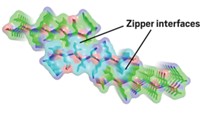Advertisement
Grab your lab coat. Let's get started
Welcome!
Welcome!
Create an account below to get 6 C&EN articles per month, receive newsletters and more - all free.
It seems this is your first time logging in online. Please enter the following information to continue.
As an ACS member you automatically get access to this site. All we need is few more details to create your reading experience.
Not you? Sign in with a different account.
Not you? Sign in with a different account.
ERROR 1
ERROR 1
ERROR 2
ERROR 2
ERROR 2
ERROR 2
ERROR 2
Password and Confirm password must match.
If you have an ACS member number, please enter it here so we can link this account to your membership. (optional)
ERROR 2
ACS values your privacy. By submitting your information, you are gaining access to C&EN and subscribing to our weekly newsletter. We use the information you provide to make your reading experience better, and we will never sell your data to third party members.
Analytical Chemistry
Zn determines amyloid shape
March 6, 2006
| A version of this story appeared in
Volume 84, Issue 10
A new spectroscopic study may help researchers get a better handle on how metal-ion coordination dictates the assembly and morphology of amyloid fibrils associated with diseases such as Alzheimer's (J. Am. Chem. Soc., published online March 1, dx.doi.org/10.1021/ja055973j). Transition metals such as zinc previously have been implicated in the assembly of amyloid fibrils. Now, a team led by David G. Lynn of Emory University has shown that Zn2+ binding dictates amyloid morphology, too. The researchers report that different Zn2+ concentrations force simple segments of the Aβ peptide of Alzheimer's disease to assemble into different morphologies, including fibrils (top) and ribbons (bottom). They used X-ray absorption spectroscopy to show that differences in the metal ion's coordination environment dictate which amyloid architecture is formed. The characteristic spectroscopic signatures they report can now be used to investigate metal coordination in full-length Aβ assemblies. Such information may reveal chemical reactivity important for cellular toxicity of Aβ, they note.





Join the conversation
Contact the reporter
Submit a Letter to the Editor for publication
Engage with us on Twitter